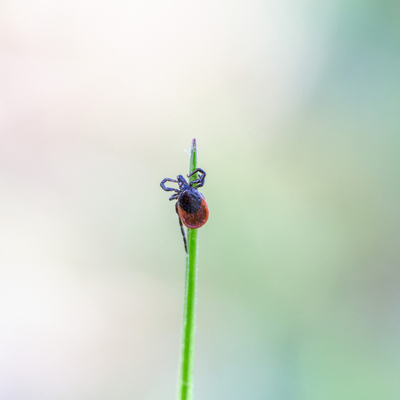Posted on March 14th, 2014
Despite the cold weather and snow on the ground, ticks still pose a threat to us. The cold weather doesn’t kill the ticks; it merely puts them in a sluggish hibernation state. This means they aren’t active but hiding under leaf litter. Once the temperature gets above 40 degrees, ticks become active.
The most common ticks found in New England are the Black Legged Tick (Deer Tick); Dog Tick, Lone Star Tick and the Brown Dog Tick. These ticks can carry diseases like Lyme disease, Babesisis and Rocky Mountain Spotted Fever and this new disease that was just identified. Nearly 90% of all Lyme cases have been reported in the northeastern part of the U.S. In 2011, almost 2,500 people in Massachusetts were diagnosed with the disease. Due to a lack of physician reporting and unrealistically stringent reporting criteria, these numbers are usually incorrect. The rule of thumb is to multiply the total count by 10. 
The Primary host for the ticks contracting Lyme Disease is small mammals like mice and chipmunks. Birds are also a source of Lyme disease. Nymphs contract Lyme Disease when they feed on these infected animals.
Ticks need moisture and a place away from sun and wind. The most common place where ticks can be found is in leaf litter, weeds, bushes and high grass. Ticks tend to hang out at about 18-24 inches off the ground and latch on to you or your pets when you brush up against them. Once a tick gets on the skin, it generally climbs upward until it reaches a protected area. Ticks can’t jump or fly, and don’t drop on to passing people or animals.
The following precautions will help to minimize ticks on your property.
Last but not least, contact Turf Unlimited and find out how our ORGANIC TICK PROGRAM can help protect your family and pets.